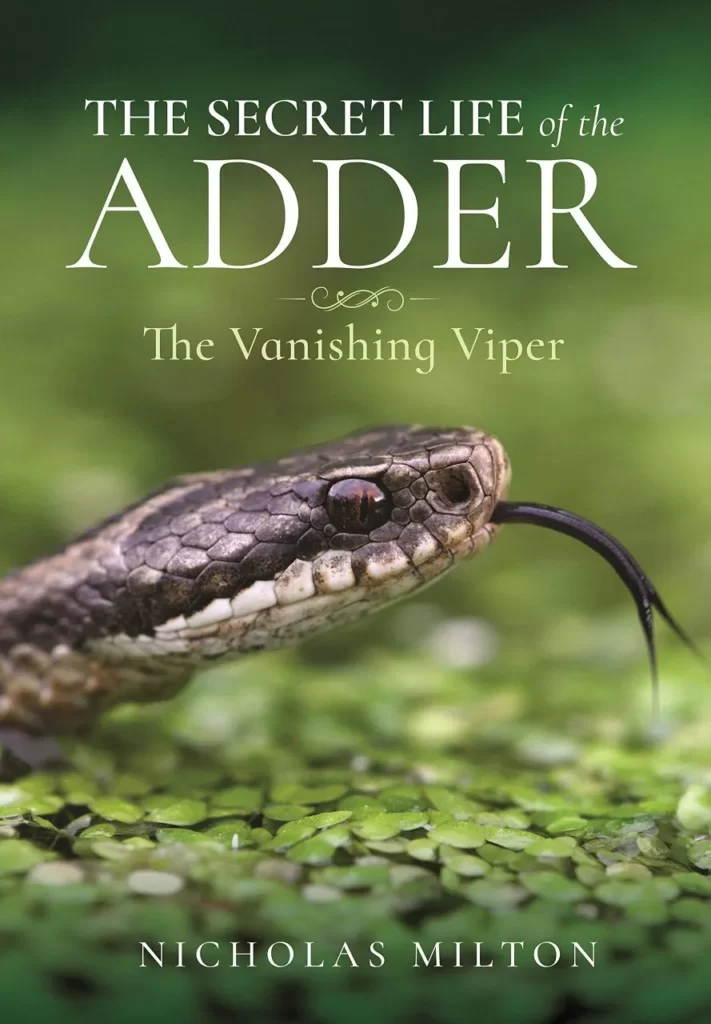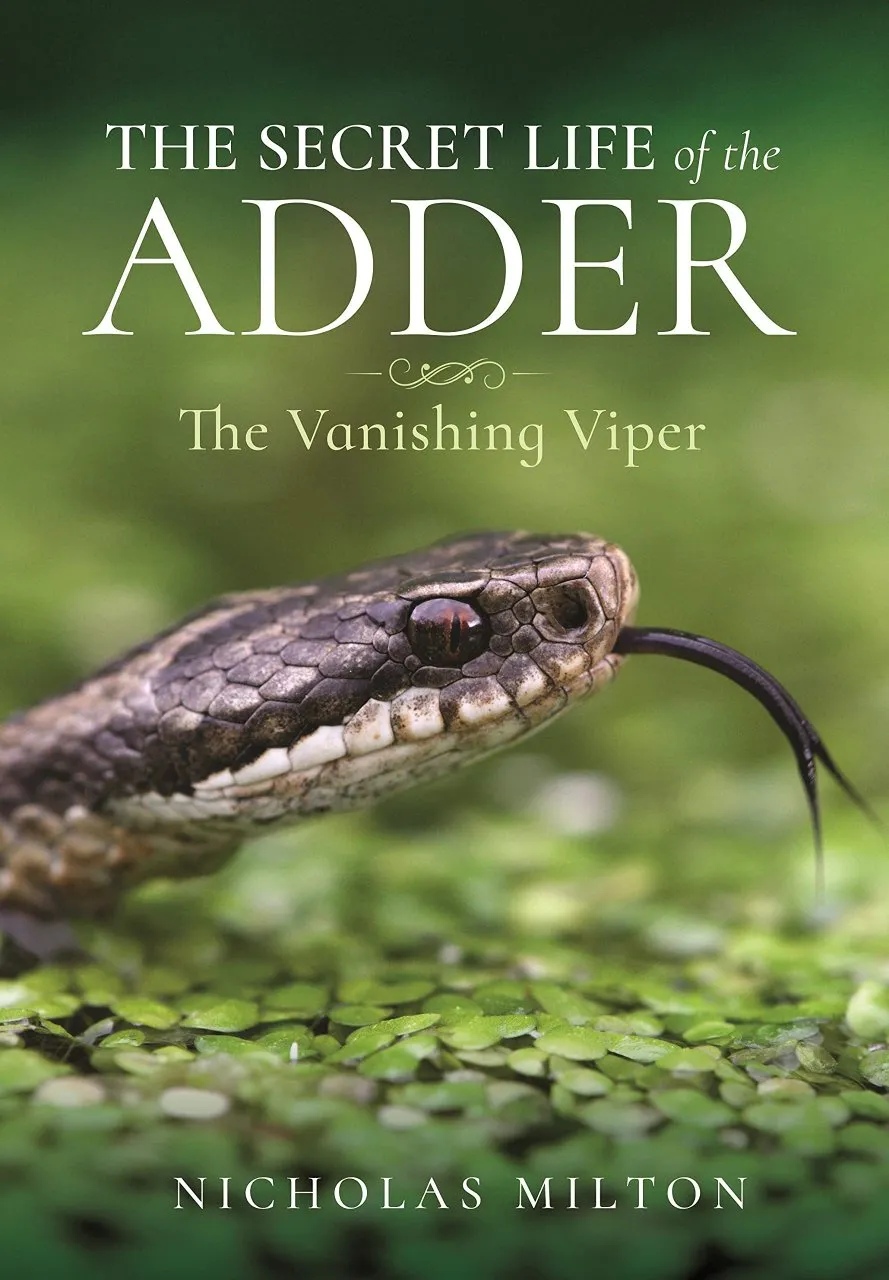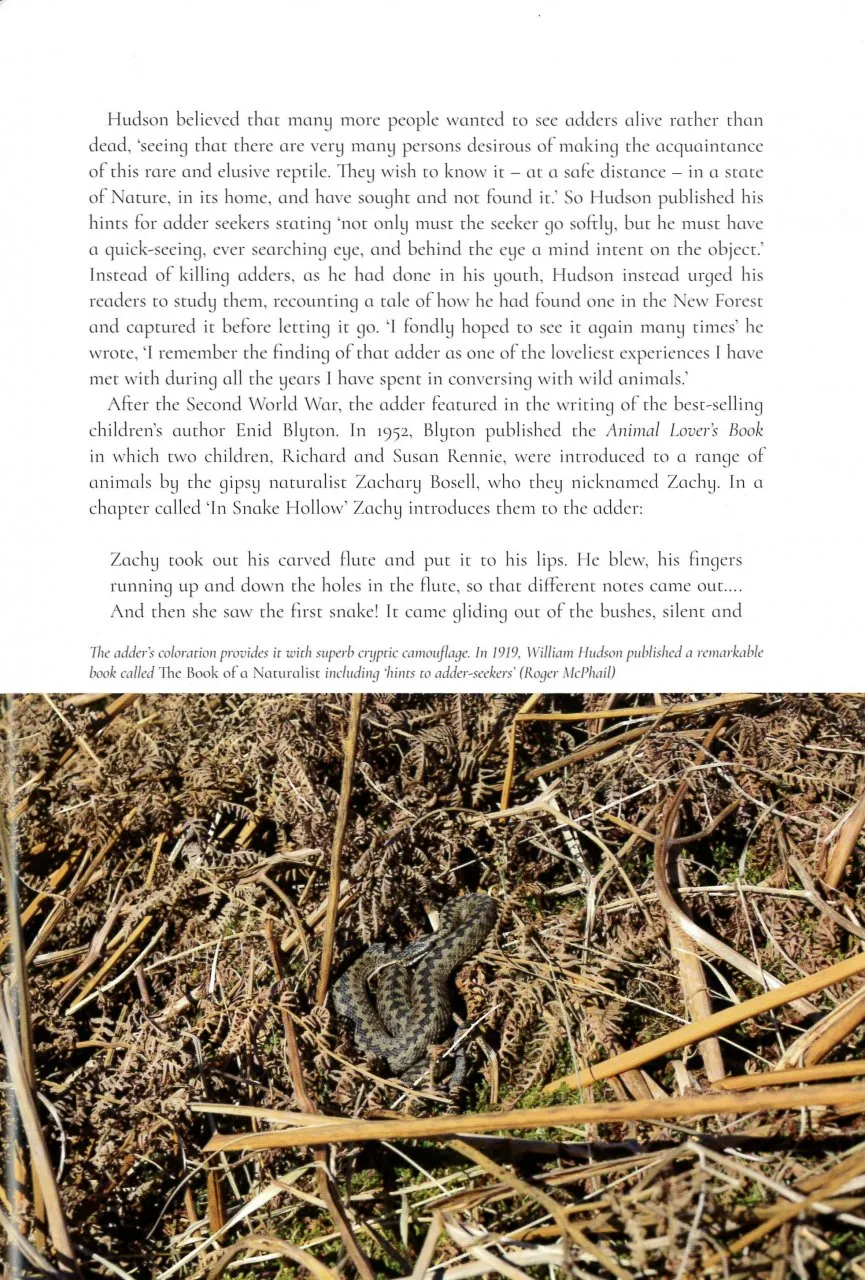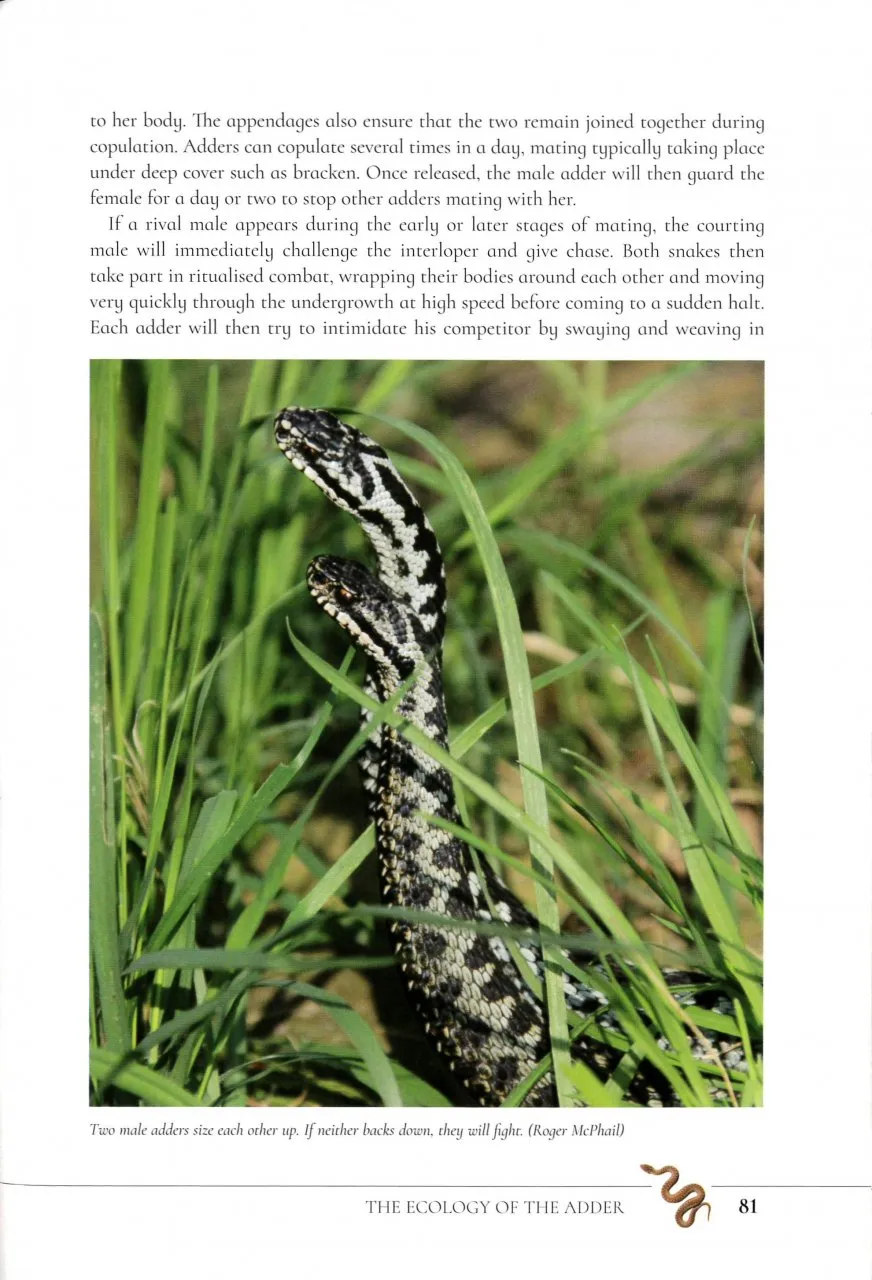Anybody who has tramped our heaths, downs, commons, woods and railway embankments over the last decade when looking for Adders will immediately relate to this well-written book, which brings its sub-title, the Vanishing Viper, into brilliantly sharp focus. The Secret Life of the Adder presents a wealth of information about this fascinating and enigmatic snake. It is good to see the book organised as a ‘call to arms’ for more attention to be paid to this species before it is too late. Some of the impetus behind Nick Milton’s book has come from a citizen-science project, ‘Making the Adder Count’, which has been running since 2005, capitalising on the skills of experienced Adder-watchers who monitor spring-time emergence from hibernation and generate counts from which population trends can be determined.
The first chapter covers the history and folklore of the Adder and it is fascinating to see all the snippets and anecdotes, which many herpetologists will be aware of, brought together into one place. The second chapter charts the decline of the species since the first documented attempt to map the Adder’s distribution, showing just how much has been lost. It may be the case that the perennial challenge of bringing together accurate data from disparate sources prevented the addition of maps or tables to demonstrate these declines, but these would have been a welcome addition to this chapter.
View this book on the NHBS website
The chapter on ecology is detailed and illustrated with many outstanding photographs of feeding, courtship and birth. The long chapter on threats shines a light on the Adder’s ‘death by a thousand cuts’ from a range of factors and contains a lot of superbly illustrative examples of the negative, ignorant and destructive attitudes of people and the media towards this snake. The book concludes with a ten-point action plan that rightly includes challenging issues such as gamebirds and controversially advocates banning dogs from all Adder sites, which would be a challenge in the few remaining stronghold counties such as Surrey, Hampshire and Dorset.
The Secret Life of the Adder is very readable and richly illustrated with some excellent photographs, which, coupled with box features exploring specific sub-topics, will help the book appeal to a broad range of readers. The behaviour shown in Roger McPhail’s photographs, including the rarely seen activities of feeding and birth, is remarkable and must have required great patience to capture. The population that Roger monitors may be exceptional, but it was a surprise to see so many of the feeding shots featuring Common Frog (eight in total), which is not a prey species usually associated with the Adder or its habitats.
This is a book with a strong message that finishes in a brave way by suggesting an action plan. It would have been good to include an increase in scientific input directed at improving our understanding of Adders as one of the points in the plan. Despite the fact that in many parts of the UK we are at the eleventh hour for this species, there is still a lot we do not know, such as the impacts on Adders of changes in the food chains that support them. This is a great book and should be regarded as essential reading for general naturalists, land-managers, and those interested in reptiles. Let us hope that it marks a turning point in the fortunes of this beautiful little snake.




